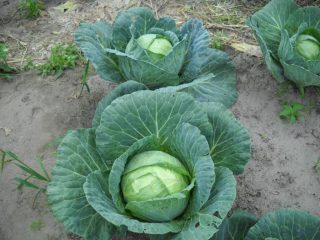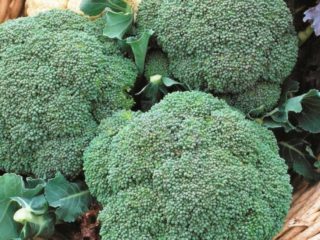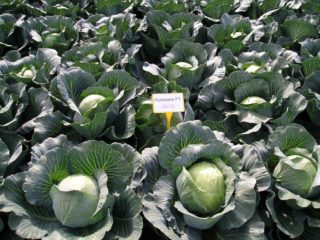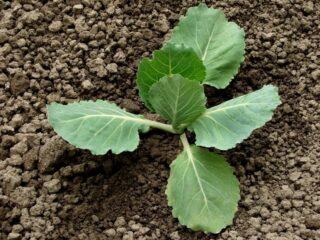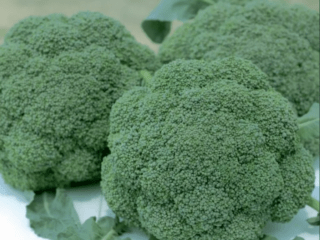Content
Experienced gardeners know that holes in cabbage are a sign of pest damage to the vegetable. And if you do not take protective measures in a timely manner in this case, you can lose the entire harvest. After all, the holes that appear subsequently begin to rot, and this leads to premature damage to the head of cabbage. However, before taking any measures, it is necessary to figure out what pest could have caused their appearance. Otherwise, the control measures taken may be useless.
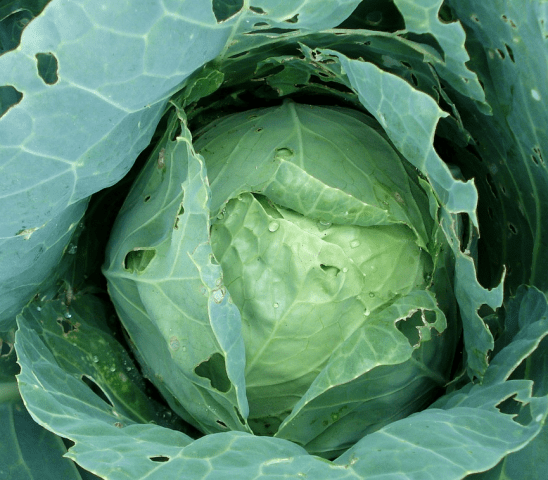
Holes in cabbage disrupt metabolic processes in plant tissues
Why did there appear holes in the cabbage?
There are several types of insects that can cause holes in cabbage heads. In this case, you can determine the type of insect by the shape, size and even shade of the hole. Therefore, it is worth considering all possible options in order to accurately determine the cause of the damage.
Slugs
When slugs invade, cabbage leaves develop rather large, irregularly shaped holes.Another characteristic feature of this pest is the presence of mucus on the surface of the plates, which they leave behind as they move. Moreover, this can be noticed even when it dries, since in this case there is a silvery tint, which is noticeable even from a distance with the naked eye.
When cabbage is infested with slugs, holes appear chaotically on the entire surface of the leaves. Damage sites are an excellent environment for fungal and viral bacteria. In the future, this causes the head of cabbage to rot. Therefore, this pest is considered the most dangerous for cruciferous crops.
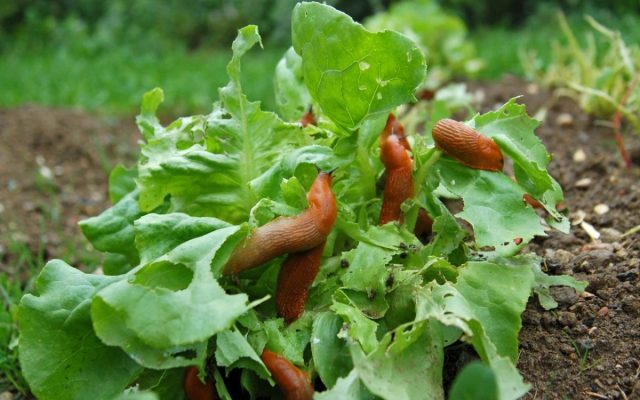
Slugs become active in high humidity
Cruciferous flea beetle
This insect is a representative of the Leaf Beetle family. The cruciferous flea beetle is a small beetle with long antennae, whose body length barely reaches 3 mm. The pest has a black or dark green color, and it is also possible to have stripes with various edgings.
Females lay eggs in the soil as soon as the air temperature in spring rises above +15 °C. Two weeks after this, larvae appear and feed on the roots of young cabbage seedlings. Subsequently, they move to the leaves of the plant, as a result of which holes appear. The first sign of cabbage being damaged by the cruciferous flea beetle is superficial holes on the plates, which subsequently become through and become widespread.
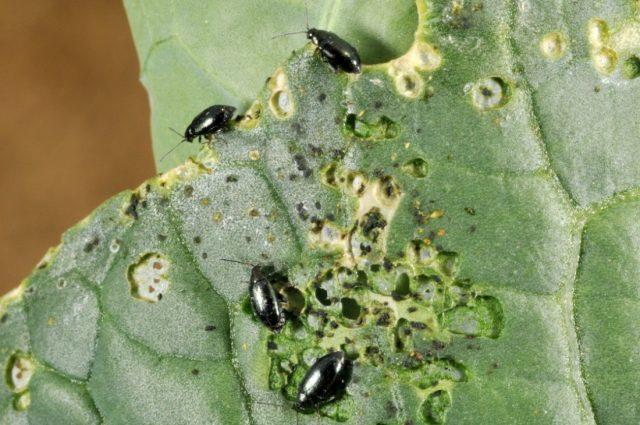
Frail cabbage seedlings die within 2-3 days when attacked by the cruciferous flea beetle.
Cabbage butterfly caterpillars
When cabbage is infected by cabbage moth larvae, holes also appear on the leaves of the plant.The caterpillars of the pest are large in size and reach 3.5 cm in length. Their body is elongated, yellow-green in color, covered with black dots and hairs. A characteristic difference is the three yellow longitudinal stripes on the sides.
Pest larvae feed on soft leaf tissue. After them, only veins remain. Also, when caterpillars invade, a sticky coating appears on the bottom of the plates.
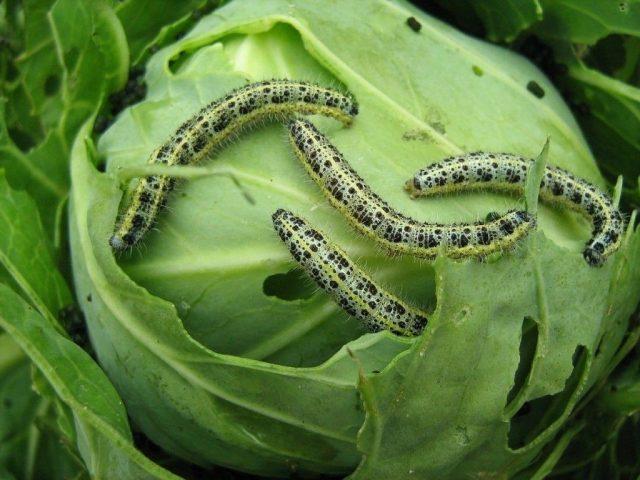
Cabbage butterfly caterpillars are particularly voracious
Cabbage fly
This is another malicious pest of all cruciferous crops. In appearance it is similar to an ordinary fly, but its body size reaches 1 cm. The insect's active flight begins in early May and then in mid-June. At this time, the cabbage fly lays eggs on cabbage leaves, from which small light-colored larvae appear after 7-10 days.
Young cabbage flies actively feed on the leaves and root system of seedlings. This not only leads to the appearance of small round holes on the plates, but can also cause the death of plants.
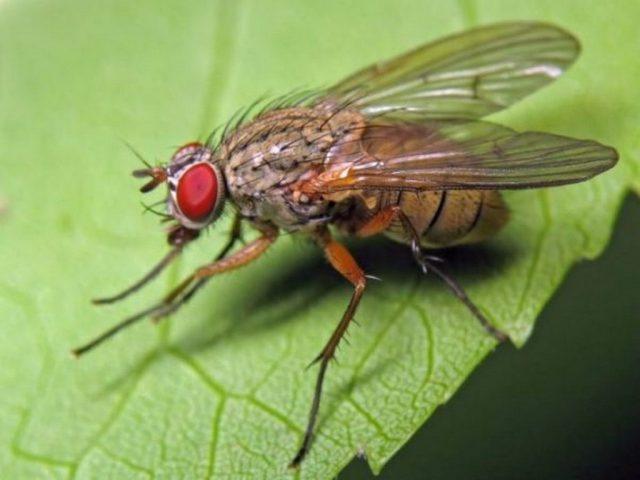
The fly becomes active at air temperatures above +18 °C
Cabbage moth caterpillars
Cabbage also becomes full of holes when attacked by cutworm larvae. They are green or brown caterpillars, up to 1.5 cm in size. After emerging from the eggs laid by butterflies, the larvae begin to actively feed, making neat round holes in cabbage leaves. Subsequently, they turn into passages that lead inside the head of cabbage.
The armyworm is fertile, but its adults do not cause damage to cabbage. During the season, 2-3 generations of the pest appear. The larvae overwinter in the soil at a depth of 10 cm.And in the absence of control measures, they quickly spread and damage all plantings of cruciferous crops.
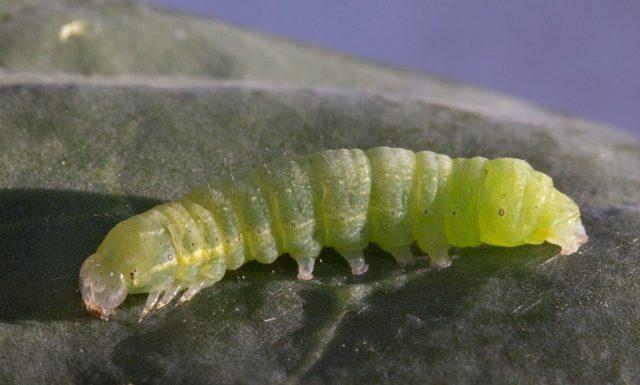
Armyworm larvae destroy up to 20% of the crop
Cabbage aphid
A small insect of a gray-green hue, which allows it to remain unnoticed on cabbage for a long time. Aphids have an accelerated reproduction rate, so soon a whole colony of this pest appears on the affected plant. The insect feeds on cabbage juice, so light spots initially form on the affected areas, which subsequently turn into necrotic spots and then holes.
Cabbage aphids can be detected at the initial stage by the curling of the plates and a sticky coating on their surface. Also a sign of the appearance of this insect on the site are ants scurrying around, feeding on the sweet spandex secreted by the insects.
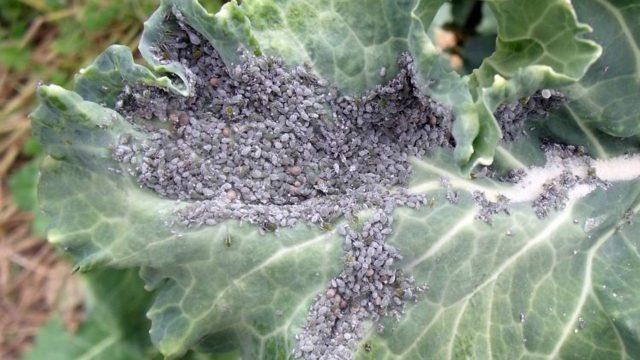
Cabbage aphids are carriers of 20 types of viruses
What to do if cabbage leaves have holes
If the leaves of Chinese, white or other cabbage have become a hole, then urgent measures must be taken to save the heads of cabbage. Otherwise, this will lead to a lack of harvest not only in the current, but also in subsequent seasons.
To control pests, you can use mechanical and agrotechnical methods, folk remedies, and chemicals. But it is worth understanding that only with complex processing of cabbage can the desired result be achieved.
Folk remedies
This control method is relevant for small numbers of pests and as a preventive measure. Folk remedies are prepared based on the available components.
The most effective of them if holes appear in the cabbage:
- Celery.The product helps against cabbage flies and aphids. To prepare it, you need to chop 4 kg of celery stalks, add 10 liters of water and boil the mixture for two hours after boiling. Then leave the solution for five hours, then clean it and add 2 liters of water. Use for spraying every five days if the first holes appear on the leaves.
- Wood ash. Treat plants with this component if holes from snails and slugs appear on the cabbage. It must be used dry. To process, you need to sprinkle wood ash at the base of the cabbage and on top of the leaves. Carry out the procedure every time after rain or watering until new holes stop appearing.
- Soda Ash. This product helps control the number of slugs in the area. To prepare it, you need to add 20 g of grated laundry soap and 3 tbsp to 10 liters of water. l. soda ash. Stir the solution before use. Treat cabbage in the morning every five days if holes appear in small quantities.
- Sagebrush. This remedy is effective against cutworm and white moth caterpillars, as well as aphids. To prepare it, you need to chop 0.5 kg of leaves and shoots of the plant and add 5 liters of water. Boil the mixture for half an hour after boiling, and then leave for a day. After the waiting period, dilute the concentrate with water in equal proportions. Before spraying the cabbage, you need to pour 100 ml of liquid soap into it. Apply when holes appear on the leaves every five days.
- Ammonia. This component repels flies, butterflies, fleas, and aphids. For treatment, you need to dilute a bottle of the drug in 10 liters of water.Spray the cabbage plantings where holes have appeared with the resulting solution and moisten the soil at the base of the seedlings. Repeat the procedure every three days.
Mechanical methods
At the initial stage of cabbage being damaged by pests, insects can be collected manually. However, this can only slow down their spread temporarily, but will not solve the problem.
Agrofibre can also be used to protect cabbage plantings from butterflies and flies. To do this, it is recommended to cover the plantings during their active summer. And against slugs and snails, it is recommended to place special traps with syrup or beer in the garden, two for each square. m. They need to be inspected daily and the pests gathered inside must be destroyed.
Agrotechnical control measures
When holes appear on cabbage leaves, it is necessary to apply agronomic control methods. To do this, it is necessary to regularly weed the vegetable plantings and prevent weeds from blooming, which attracts the attention of butterflies.
Insecticides
If cabbage leaves have holes, it is recommended to treat the crop with special chemicals - insecticides. They are fast acting. After spraying, pests lose the ability to move and feed, and eventually die. Treatment must be carried out twice, since insecticides have a toxic effect on adult pests and larvae of pests, but they do not penetrate the shell of the eggs.
The most effective of them if holes appear on the cabbage leaves:
- Aktara.
- Karate Zeon.
- Fufanon.
- Diazinon.
- Confidor Extra.
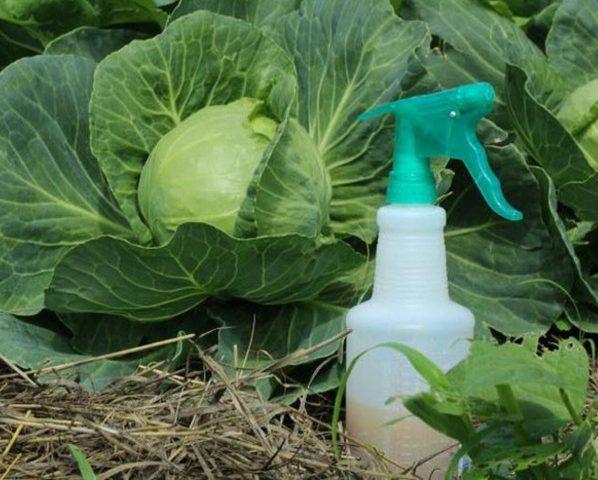
Chemicals should not be used while the crop is ripening
Other chemicals based on metaldehyde are suitable against slugs. They are sold in the form of granules, which need to be scattered on the surface of the soil in places where they accumulate and move. This leads to the death of slugs.
Prevention methods
To prevent holes from appearing on cabbage leaves, you need to follow simple prevention rules. They cannot completely eliminate pest damage to cruciferous crops, but they reduce this likelihood to a minimum.
Basic preventive measures:
- compliance with crop rotation;
- deep plowing in autumn;
- timely removal of plant residues from the garden beds and burning them;
- early planting of seedlings before mass reproduction of insects.
Conclusion
Holes in cabbage can appear at any time during the growing season of the crop. Therefore, throughout the entire season, you need to regularly inspect the plants and respond to warning signs in a timely manner, without waiting for mass reproduction of pests. This will help minimize the damage that insects can cause to the crop.

